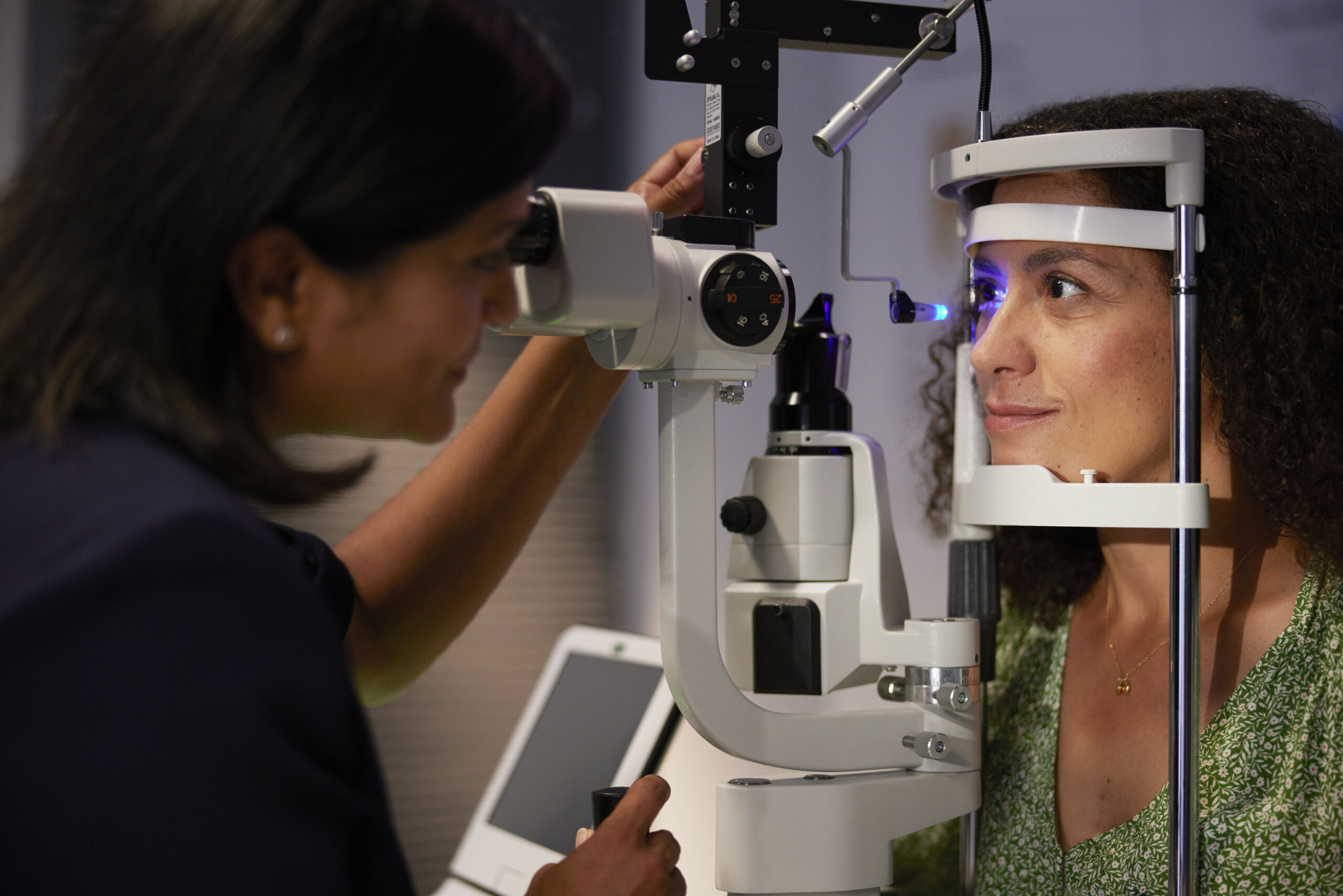Eye-health experts are highlighting the importance of regular eye tests and the warning signs in South Devon people’s eyes that could indicate a risk of diabetes.
This comes ahead of World Diabetes Day on 14 November, with one in 10 people predicted to have the condition by 2030.
If left untreated, type 2 diabetes can damage the heart, kidneys, feet and eyes – and in some cases even lead to diabetic retinopathy which can cause sight loss.
To prevent this from happening, Specsavers is setting out tell-tale signs of the condition.
Giles Edmonds, Specsavers clinical services director, says: ‘A complication of diabetes is diabetic retinopathy, which can occur when high blood sugar levels over a long period of time damage the blood vessels in the back of the eye. If left untreated it can cause sight loss. In its early stages diabetic retinopathy usually doesn’t pose any noticeable symptoms, so an eye test can pick it up before you do.’
‘As the condition affects small blood vessels in the eye, damaging the retina, your optometrist can look for early characteristic changes, such as tiny leaks from these damaged vessels.
‘As retinopathy develops, blood vessels can weaken, bulge or leak into the retina and can be referred to as non-proliferative retinopathy. However, if it worsens, some vessels can close off which causes new ones to grow, or proliferate, on the surface of the retina. This is known as proliferative retinopathy and can lead to problems with your vision and even sight loss.
‘Some people who have diabetic retinopathy can also develop diabetic macular oedema. The macula is the part of your retina you need for reading, driving and seeing faces. However, over time the disease can destroy the sharp vision in this part of the eye leading to partial vision loss or even blindness .’
As diabetic retinopathy is a serious condition, it is also important to monitor any changes in your vision and get them checked out by your optometrist. The warning signs include:
Persistent floaters
Mr Edmonds says: ‘Floaters are spots in your vision and usually look like black or grey specs or cobwebs that drift about when you move your eyes. Most people will experience floaters in their vision at some point in their life – particularly as we reach older age as the jelly-like substance in our eyes becomes more liquid.
‘If you notice more eye floaters than usual, a sudden onset of new ones, flashes of light in the eye or darkness on any side of your vision, you must get it looked at immediately as in some cases it can be a symptom of diabetic retinopathy.’
Blurred vision
Mr Edmonds adds: ‘Blurred vision can be caused by many things and it is vital you get it checked out. Blurry vision can also be a symptom of diabetes which can resolve when blood sugars start to reduce after diagnosis and starting treatment. It can also lead to dimmer vision, as if you’re wearing sunglasses, or struggling to see when it’s dark, which are important signs not to ignore.’
Specsavers offers digital retinal photography free of charge as part of a standard eye test for customers aged over 40. It takes a detailed picture of the back of a person’s eye, allowing the blood vessels to be monitored more closely – helping to detect any signs of diabetes that might be present.
For more information or to book an appointment visit www.specsavers.co.uk/eye-health/diabetic-retinopathy

You can join us on our social media pages, follow us on Facebook or Twitter and keep up to date with whats going on in South Devon.
Got a news story, blog or press release that you’d like to share or want to advertise with us? Contact us





























